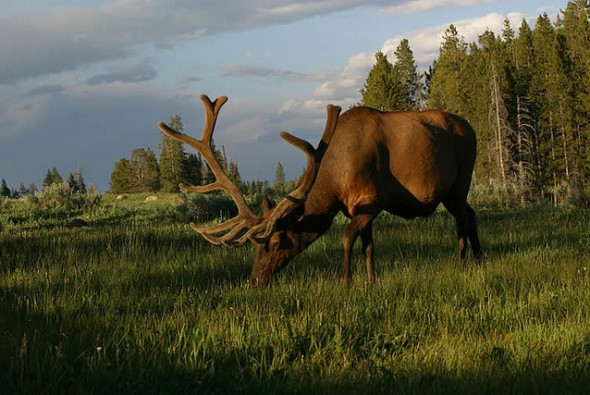LAST UPDATED: May 1st, 2015
A unique Canadian collegiate study suggests that an elk’s personality may be the determining factor in whether or it makes through another hunting season, not your elk hunting skills, believe it or not.
University of Alberta led research shows that an elk’s personality type is a big factor in whether or not it survives the hunting season.
Data collected from GPS collars on more than 100 male and female elk in southwestern Alberta showed U of A researchers the study population could be divided into two categories: bold runners and shy hiders.
Bold-runner elk, both males and females, moved quickly through the study area and preferred to graze in open fields for the most abundant and nutritious grass. GPS data showed shy hiders stayed and grazed on the sparse vegetation of wooded areas and moved slowly and cautiously.
U of A researchers found far more bold-runners were taken by elk hunters than shy hiders.
U of A biologist and lead researcher Simone Ciuti says this is the first time an animal’s personality type has been linked to survival in a hunting season.
“Up until now it was believed the physical traits of an elk dictated what animals were taken by hunters,” said Ciuti. “Big male elk with large antler racks are traditionally the prime target for hunters.”
But the GPS data collected over one hunting season shows hunters are going for the most visible or available elk and understandably more, bold-runner elks showed up in the scopes of high-powered rifles.
Researchers put GPS collars on a specific group of male elk.
For the study, 45, two-and-a-half-year old male elk were collared. At two-and-a-half-years of age this was the first time these young males were eligible hunting targets. Thirty-three per cent of the males were taken by hunters. All were identified by GPS data as bold runners.
The same held true for a wider age group of 77 female elk in the study. All females between two and nine years of age and identified as bold runners were taken by hunters. All the female elk in that age group identified as shy hiders survived the hunt.
The researchers found something interesting in the survival rate of older female elk.
All the females older than nine years survived the hunting season. Ciuti says it shows in females that whether they’re bold runner or shy hiders, if they lived to 9 years of age, they adapted to hunters and became less visible targets.






